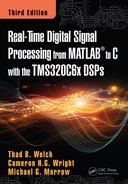Book Description
This updated edition gives readers hands-on experience in real-time DSP using a practical, step-by-step framework that also incorporates demonstrations, exercises, and problems, coupled with brief overviews of applicable theory and MATLAB applications. Organized in three sections that cover enduring fundamentals and present practical projects and invaluable appendices, this new edition provides support for the most recent and powerful of the inexpensive DSP development boards currently available from Texas Instruments: the OMAP-L138 LCDK. It includes two new real-time DSP projects, as well as three new appendices: an introduction to the Code Generation tools available with MATLAB, a guide on how to turn the LCDK into a portable battery-operated device, and a comparison of the three DSP boards directly supported by this edition.
